I first visited the Canadian Warplane Heritage Museum in 1995 on a March Break with my mom, brother and Oma. While this was post-fire, they were all crammed into the one surviving original hangers. I still am a bit of a flyboy. I logged countless hours in Microsoft Flight and Combat Flight Simulator. But seeing these warplanes up close and personal was a dream come true. The stunning array of machine guns at the front of a B-25 Mitchell (there’s a 4×6 print at my parent’s home of that) and the massive bomb bay of the Avro Lancaster. Since then, the museum has become a fast favourite. Having a rare free Friday and a rainy one, I decided to take myself back to the museum for this month’s roll in the Frugal Film Project.
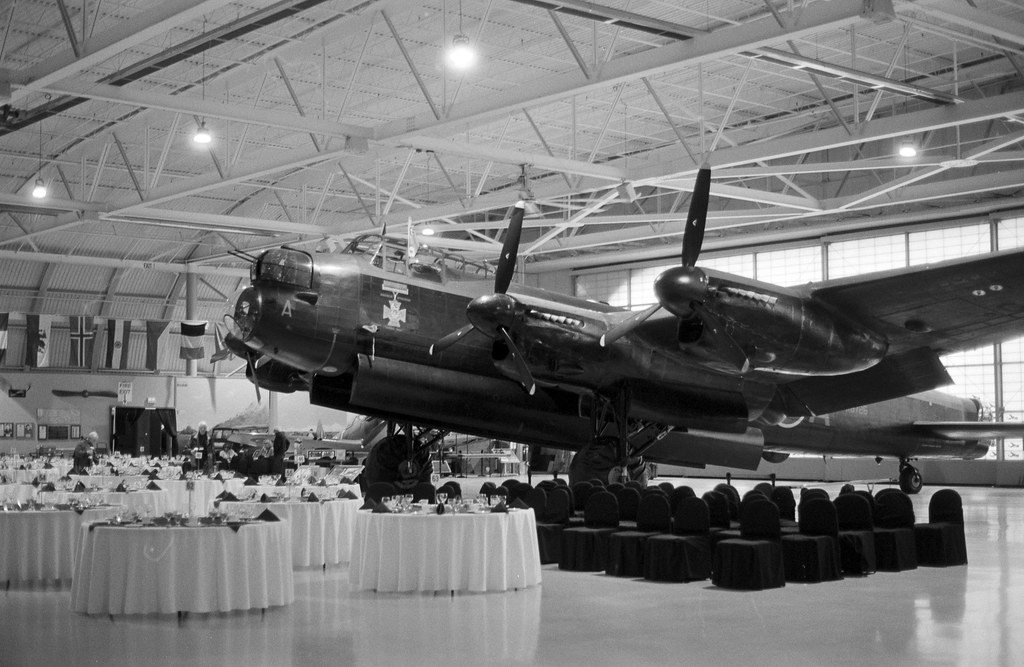
Konica-Minolta Maxxum 70 – Minolta Maxxum AF 50mm 1:1.7- Arista EDU.Ultra 100 @ ASA-200 – Diafine (Stock) 3:00 + 3:00 @ 20C
It all started in 1972; two men, Dennis Bradley and Allan Ness, decided to purchase a Fairly Firefly, a World War Two carrier-based reconnaissance and strike fighter. With the help of Peter Matthews and John Weir, the four men bought and restored the Firefly to airworthiness. Realising that there was an opportunity to repeat this, the men formed the Canadian Warplane Heritage Foundation (later museum), renting a section of Hanger No. 3 at the Hamilton Airport. The goal of the new museum is to preserve, maintain, document and teach about the aircraft operated by Canadians and the Canadian Military. The Firefly soon was joined by a Chipmunk, Supermarine Seafire, Tiger Moth, Corsair, and a Harvard. The acquisition of a North American B-25 Mitchell to restore the medium bomber to airworthiness saw the museum purchase both the remainder of Hanger No. 3 and all of Hanger No. 4. They soon realised that the general public had an interest in viewing not only the collection but also the volunteers working on the planes themselves. The death of Allan Ness in 1977 and the loss of the original Firefly proved a huge blow, the death of Nash more than the loss of a plane. But the museum moved forward, getting their hands on the most significant project they completed—an Avro Lancaster Mk. X, numbered FM213. A late war production heavy-bomber, FM213 never saw combat and spent its career as a marine reconnaissance aircraft for the RCAF; after being retired in 1963, it ended up on three pillars at Branch 109 of the Royal Canadian Legion in Goderich, Ontario. The museum purchased FM213 and, with the help of the Canadian Armed Forces, airlifted the bomber from Goderich to Hamilton in 1979. After nearly a decade of work restoring the Lancaster to how it appeared during World War Two, FM213 took flight in 1988. The museum named the bomber the Andrew Mynarski VC Memorial Bomber. The museum painted in the No. 419 “Moose” Squadron livery with the identification marker VR-A—Pilot Officer Mynarski, assigned to VR-A as a gunner under Flying Officer Art de Breyne. On 13 June 1944, de Breyne’s bomber was part of a bombing operation against Cambrai, France, when the plane took catastrophic damage from enemy anti-aircraft fire. With orders to bail out, Mynarski noted that a fellow gunner, Pilot Officer Pat Brophy, had been trapped in the rear turret. Mynarski then attempted to rescue Brophy but, being unable to, bailed out of the escape hatch on fire. Damage to his parachute resulted in a hard landing, and Mynarski died of his injuries in a German field hospital. Through the efforts of Brophy, Mynarski would be awarded (posthumously) the Victoria Cross. The museum nearly lost everything when Hanger No. 3 caught fire in 1993. Thanks to the efforts of volunteers and the fire department, most of the collection was saved, including the B-25 and the Lancaster. The entire hanger was lost: five aircraft, offices, ground maintenance equipment, and almost all the records. But the community rallied, and in 1996, a new purpose-built facility opened in a grand ceremony by King Charles III (then HRH the Prince of Wales), the museum’s patron. Today, the Canadian War Plane Heritage Museum has a collection of forty aircraft, ranging from World War Two trainers to Cold War jets. Eighteen of these planes are airworthy and flow on regular and semi-regular bases. The museum is also working hard to restore four other planes to airworthiness; another three are on the block for such a restoration.
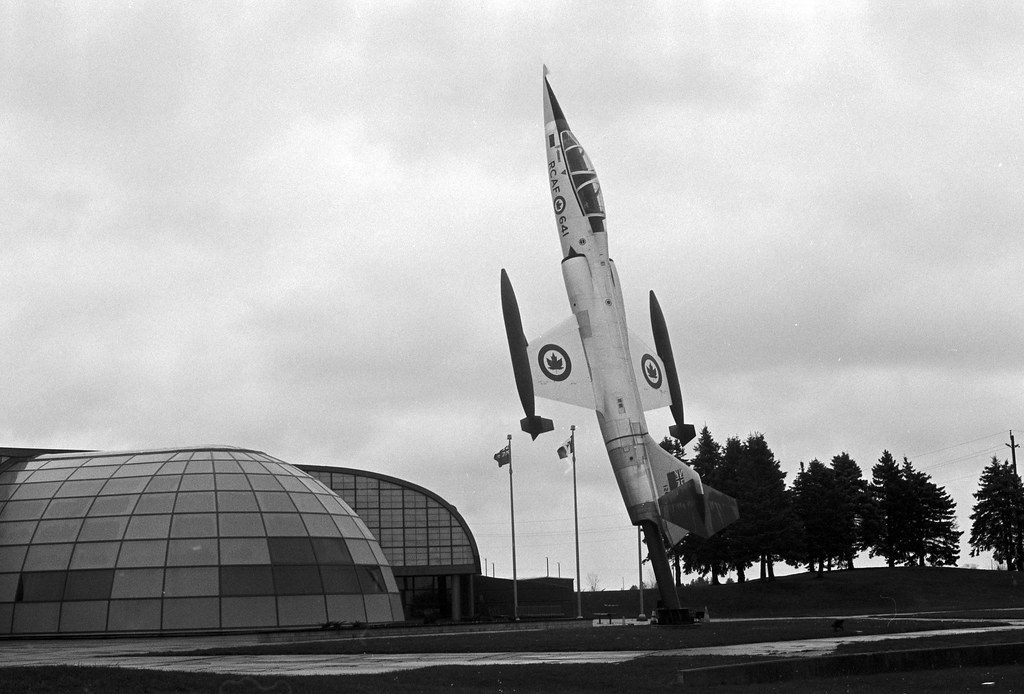
Konica-Minolta Maxxum 70 – Minolta Maxxum AF 50mm 1:1.7- Arista EDU.Ultra 100 @ ASA-200 – Diafine (Stock) 3:00 + 3:00 @ 20C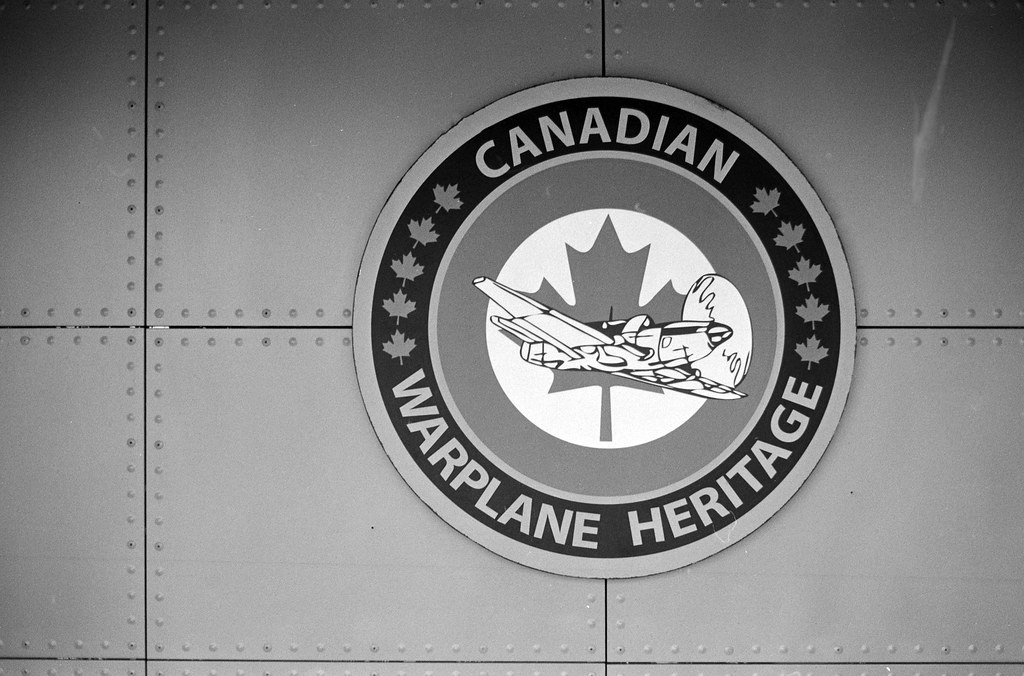
Konica-Minolta Maxxum 70 – Minolta Maxxum AF 50mm 1:1.7- Arista EDU.Ultra 100 @ ASA-200 – Diafine (Stock) 3:00 + 3:00 @ 20C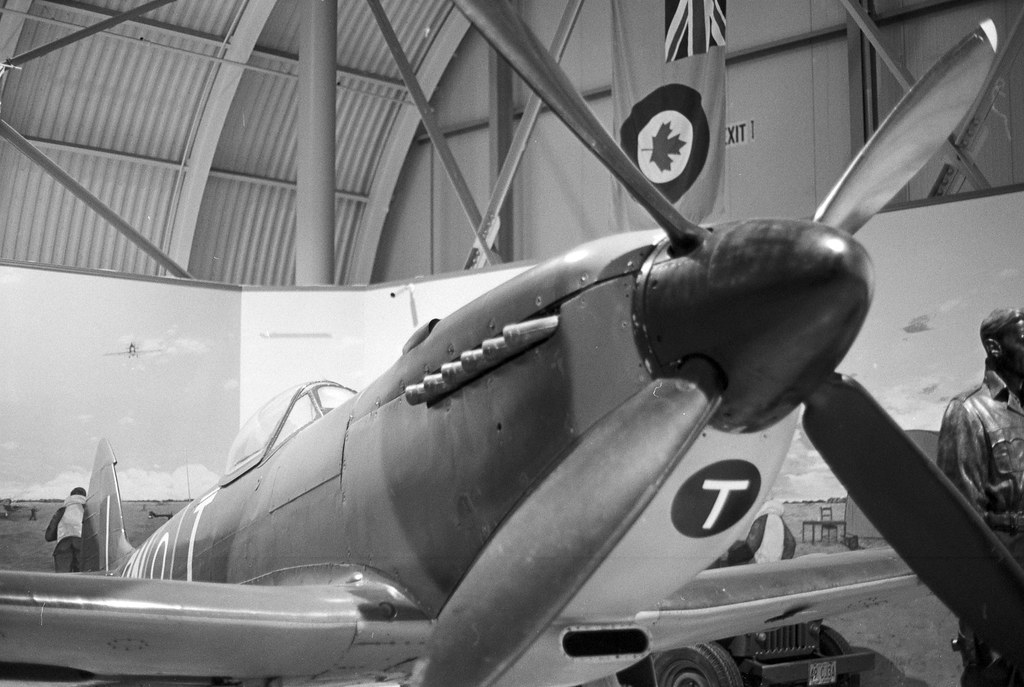
Konica-Minolta Maxxum 70 – Minolta Maxxum AF 50mm 1:1.7- Arista EDU.Ultra 100 @ ASA-200 – Diafine (Stock) 3:00 + 3:00 @ 20C
Konica-Minolta Maxxum 70 – Minolta Maxxum AF 50mm 1:1.7- Arista EDU.Ultra 100 @ ASA-200 – Diafine (Stock) 3:00 + 3:00 @ 20C
When I visit the CWHM I will usually got with shooting big picture ideas, but the kit lens offers only a 28mm focal length at the widest angle, and f/3.5 isn’t too fast when shooting indoors in a museum with lower light. I made a point this time around to focus in on the details, using a ‘normal’ lens, or 50mm lens, to help me get in close. The problem is that the day I went to the museum was also the day that they were in the middle of setting up for their gala dinner event taking place the next day. This simple fact meant that an already crowded museum was even more crowded as some of the planes were packed closer together in the other half of the space. But on the plus side it put the star of the museum, the Lancaster Mk. X, known as “Vera” for the VR-A identification mark, front and centre. While there are plenty of images with noticeable camera shake, I was shooting at speeds no faster than 1/30″, with most averaging around the 1/20″ mark, so I didn’t end up with a lot of keepers, but I’m still happy with the shots I did get.
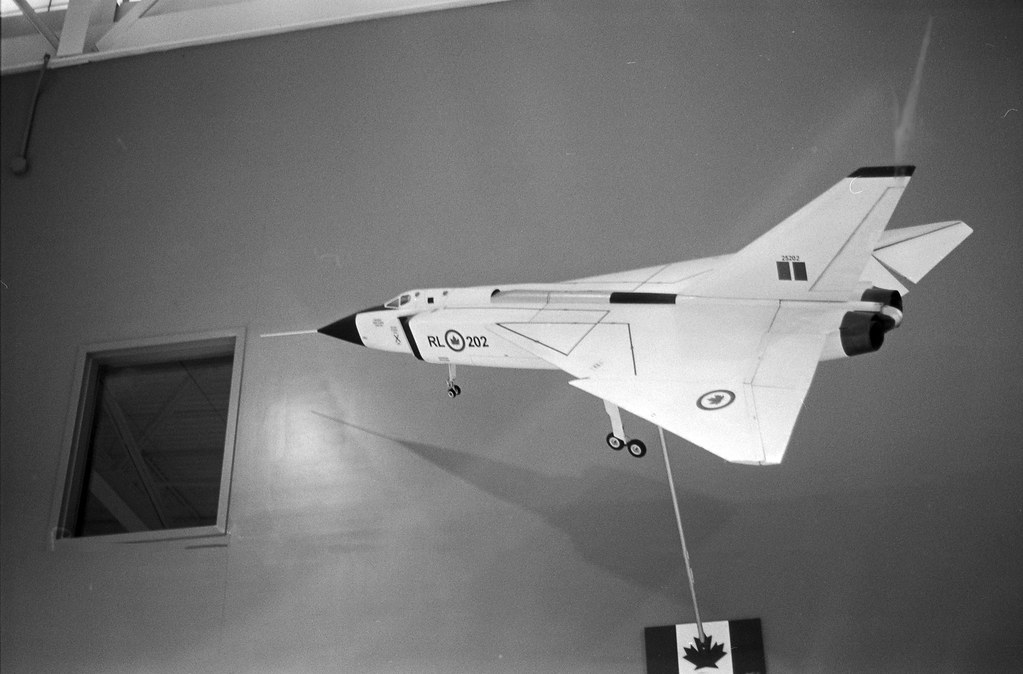
Konica-Minolta Maxxum 70 – Minolta Maxxum AF 50mm 1:1.7- Arista EDU.Ultra 100 @ ASA-200 – Diafine (Stock) 3:00 + 3:00 @ 20C
Konica-Minolta Maxxum 70 – Minolta Maxxum AF 50mm 1:1.7- Arista EDU.Ultra 100 @ ASA-200 – Diafine (Stock) 3:00 + 3:00 @ 20C
Konica-Minolta Maxxum 70 – Minolta Maxxum AF 50mm 1:1.7- Arista EDU.Ultra 100 @ ASA-200 – Diafine (Stock) 3:00 + 3:00 @ 20C
Konica-Minolta Maxxum 70 – Minolta Maxxum AF 50mm 1:1.7- Arista EDU.Ultra 100 @ ASA-200 – Diafine (Stock) 3:00 + 3:00 @ 20C
This month, I decided to switch up the lens again; it is hard to get full shots of the planes on display inside the CWHM because they are limited in space. These planes are much bigger than you think, especially the Lancaster. While I have a Konica-Minolta Zoom AF 17-35mm 1:2.8-4 D lens, it isn’t a part of my first group of lenses I got for free, nor is my 24mm f/2.8. And yes, I could have used the 28mm f/2.8 lens, working in those close quarters, which isn’t wide enough for my tastes to give a proper scale to the planes on display. Instead, as mentioned in the previous paragraph, I focused on details; my 50mm f/1.7 is an excellent choice. The Maxxum 50/1.7 is part of my original set of A-Mount lenses and can get in nice and close. In contrast, not a macro lens, it does have excellent close-focus abilities. Since I also wanted to control my depth of field, I shot this roll in aperture priority mode, setting the aperture to f/2 and my metering to centre-weighted. To help in the low light conditions, I exposed the film to ASA-200. I developed it using Diafine, using a 3:00 + 3:00 development time. One of the best parts about Diafine is that it is both a solvent and compensating developer, making the images appear as if I shot the film at the box speed. Combining Arista 100 with Diafine gives you a wonderful, classic-looking picture.
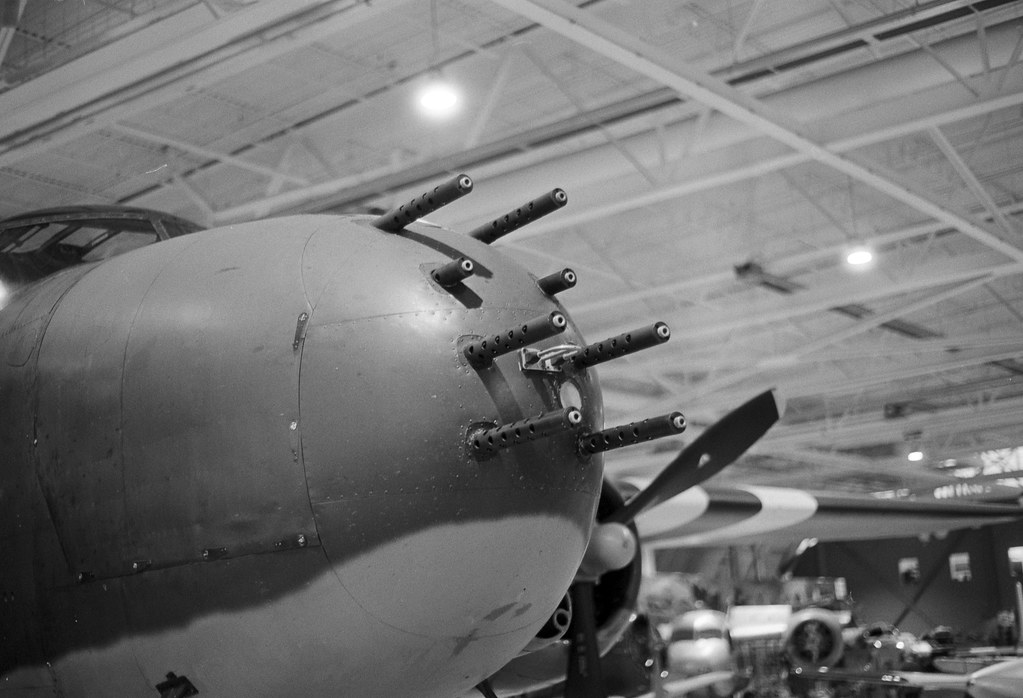
Konica-Minolta Maxxum 70 – Minolta Maxxum AF 50mm 1:1.7- Arista EDU.Ultra 100 @ ASA-200 – Diafine (Stock) 3:00 + 3:00 @ 20C
Konica-Minolta Maxxum 70 – Minolta Maxxum AF 50mm 1:1.7- Arista EDU.Ultra 100 @ ASA-200 – Diafine (Stock) 3:00 + 3:00 @ 20C
Konica-Minolta Maxxum 70 – Minolta Maxxum AF 50mm 1:1.7- Arista EDU.Ultra 100 @ ASA-200 – Diafine (Stock) 3:00 + 3:00 @ 20C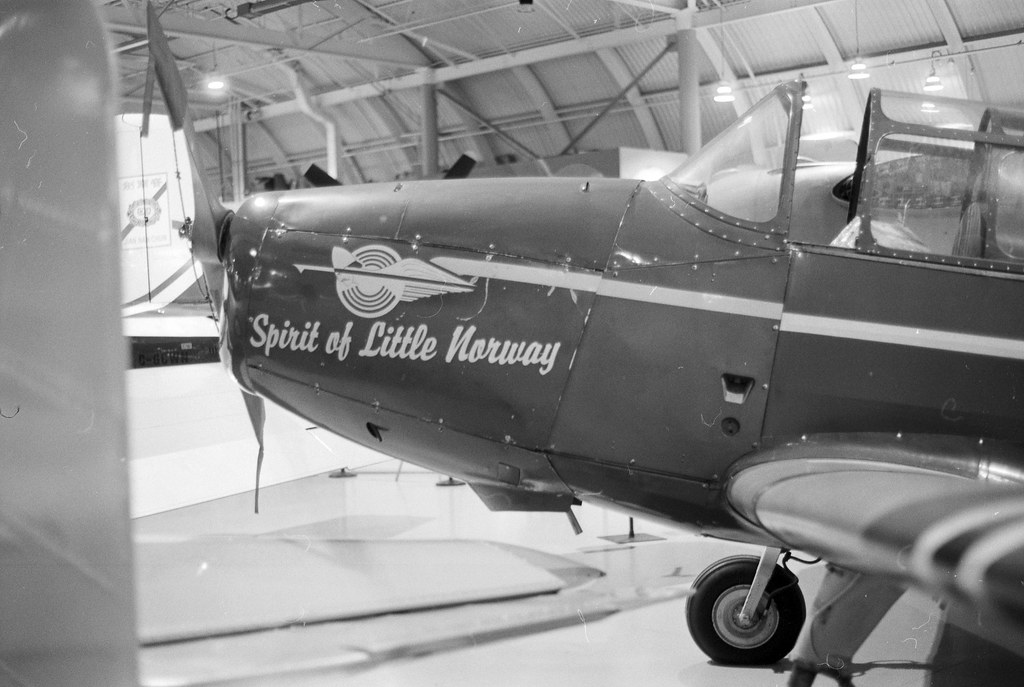
Konica-Minolta Maxxum 70 – Minolta Maxxum AF 50mm 1:1.7- Arista EDU.Ultra 100 @ ASA-200 – Diafine (Stock) 3:00 + 3:00 @ 20C
If you are interested in Canadian military aviation and live on this side of Toronto. In that case, visiting the CWHM at the Hamilton Airport is well worth your time. And you have extra money lying around. In that case, you can buy flying tickets on the operating aircraft, including the Lancaster. But even if you don’t, visiting the museum on the flying days is well worth hearing the planes taking off, flying over and landing. I had the chance to get up-close and personal with the Lancaster back in 2021 when my wife’s maternal grandfather got to fly in the Lancaster. During my visit in November, I also shot my D750 and Rolleiflex while at the museum; you can see those images on Flickr. It’s hard to believe we’re already at the end of 2023. However, there’s still one entry in this year’s Frugal Film Project. For that, we’re heading to Hamilton, Ontario to wrap up the year in a part of the city I don’t often visit, Concession Street up on the Hamilton Mountain!